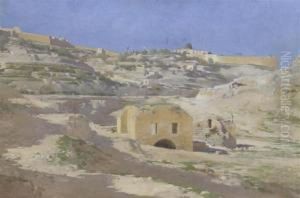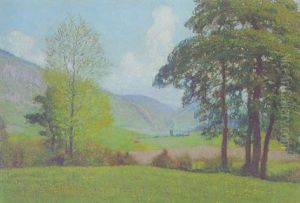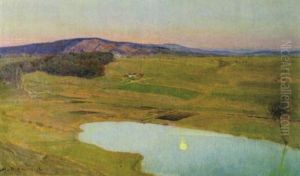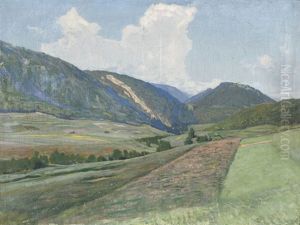Leo Paul Samuel Robert Paintings
Léon Paul Robert, also known as Léo-Paul Robert, was a Swiss painter born on May 13, 1831, in Bienne, Switzerland. He was renowned for his exquisite depictions of nature, landscapes, and genre scenes that often included birds, a subject for which he held a deep passion and affinity. Robert's artistic talents began to emerge early in his life, and his dedication to art led him to pursue formal training to hone his skills.
Robert's education in the arts took him to Paris, where he studied under the tutelage of the esteemed artist Louis Léopold Robert, who was also his uncle. Under his uncle's guidance, Léon Paul Robert absorbed the Romantic style prevalent during the period, which would later influence his own work. After his uncle's death, Robert continued his studies at the Academy of Fine Arts in Munich, Germany, where he was exposed to various artistic styles and techniques.
Upon completing his education, Robert returned to Switzerland, where he settled in the Neuchâtel area. His work began to gain recognition for its realism and sensitivity to the natural world. Robert's landscapes and genre scenes were marked by a poetic quality and often featured the Swiss countryside, capturing the essence of rural life and its serene beauty. He was particularly adept at integrating human figures within these settings, creating harmonious compositions that reflected a peaceful coexistence between humanity and nature.
Throughout his career, Robert received numerous awards and accolades, including a gold medal at the Paris World's Fair in 1878. His paintings were highly sought after by collectors and art enthusiasts, and he became one of the most prominent Swiss artists of his time. Robert was also active in promoting the arts in Switzerland and was a member of various artistic societies.
As he aged, Robert continued to paint, although his output slowed down. He remained active in the art community and was revered by younger artists who saw him as an inspiration and a link to the artistic traditions of the past. Léon Paul Robert passed away on February 1, 1923, in La Chaux-de-Fonds, Switzerland. His legacy is preserved through his art, which continues to be admired for its beauty, technical skill, and its evocative portrayal of the natural world.



















